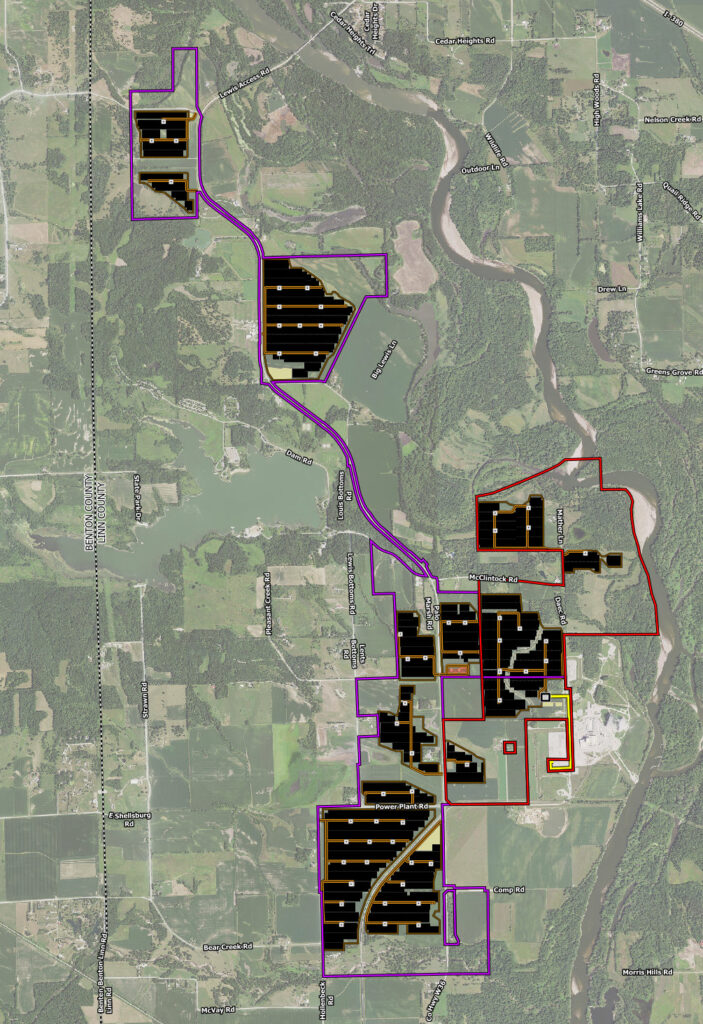
Most of Thursday’s Technical Review Committee meeting to review NextEra Energy Resource’s rezoning applications for two industrial-scale solar energy projects near Palo covered detailed aspects of the plans.
But a question toward the end of the meeting raised the issue of minimum above-ground height of the solar panels themselves – an issue that also came up during the county’s review, and eventual approval, of an industrial-scale solar project near Coggon.
Deputy Linn County Conservation director Daniel Gibbins, one of the county officials at Thursday’s committee meeting, asked NextEra officials to consider altering the solar panels’ racking system to increase their minimum height by two feet, from the currently-proposed 18 inches to 42 inches, as part of a “cost-benefit analysis” of the proposal’s environmental impact.
“I would really like to see consideration (of) a taller racking system,” Mr. Gibbins said. “If you raise those racks two feet, you could actually legitimately get a native ecosystem under those that would have real benefit.”
After the meeting, Mr. Gibbins clarified his request via email, saying the higher panel height would “allow for a pure composition of native warm season prairie species without having to add a mowable mix of cool season grass species.
“Currently the design of 18 inches would require cool season grass that can tolerate regular mowing cycles, but would compete with the native species,” he wrote. “Native prairie would be managed typically with a single mowing in the dormant season, allowing for season-long blooming and seed production of the prairie grasses and forbs, which is beneficial to hundreds of insect, bird and other wildlife species.”
NextEra officials didn’t respond to Mr. Gibbins’ request at the meeting. However, officials from Clenera Energy, the company developing the Coggon solar project, indicated during public meetings that a significant increase in panel height would have made that project economically infeasible.
Other county officials, including planning and development director Charlie Nichols, county engineer Brad Ketels, building official Luke Maloney, soil conservationist Jon Gallagher, emergency management coordinator BJ Dvorak, senior environmental health specialist Sue Ellen Hosch and Sheriff’s Office Major Chad Colston, questioned NextEra representatives about a number of other project details, ranging from safety issues and emergency response plans to identification of historic resources, soil compaction impacts and mitigation strategies, biological habitat assessments, erosion studies and resilience to high-wind events.
So far, the Duane Arnold Solar project includes two phases. Duane Arnold Solar I would install a 50-watt solar generation project on a 316-acre site, while Duane Arnold Solar II would add 150 watts of solar energy generation and a 75-watt Battery Energy Storage System (BESS) on 815 acres. Both projects are proposed for concurrent approval but would be constructed in separate phases on parcels spanning an area between Palo and Center Point, in the shadow of the former Duane Arnold Energy Center nuclear power plant currently in the midst of decommissioning.
NextEra has said it plans to invest an estimated $800 million in the project overall, including $30 million in lease payments to participating landowners over the project’s projected 30-year lifespan. Other phases could be added to the project under future proposals.
If approved, officials say they hope to have the Duane Arnold Solar I and II projects operational by the end of 2024. Once completed, plans call for Alliant Energy, through its Iowa utility subsidiary, Interstate Power and Light, to purchase and operate the project.
NextEra officials at the meeting said they plan to address the county committee’s questions in the next few weeks.
The Duane Arnold Solar projects still face an extensive review process. Mr. Nichols said he plans to schedule the next step in that process – a public meeting of the county’s Planning and Zoning Commission – sometime in late June and early July. That meeting, to be followed by three subsequent public hearings by the Linn County Board of Supervisors, will be held at the Palo Community Center, Mr. Nichols said.
No public comments were taken at Thursday’s committee meeting, but all future meetings will include the opportunity for public comment.





